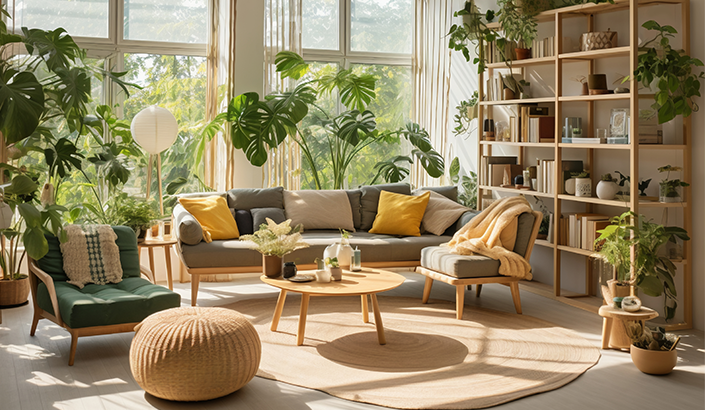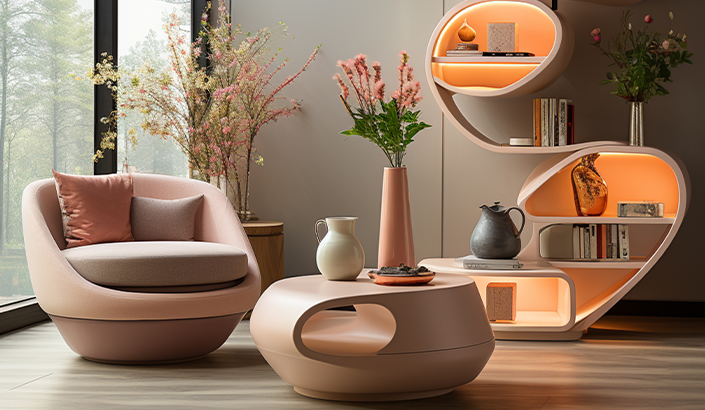
Sustainable Furniture Choices for the Eco-Conscious Consumer
In today's world, where environmental concerns are at the forefront of many buying decisions, choosing sustainable furniture is becoming a priority for eco-conscious consumers. Sustainable furniture not only helps reduce environmental impact but also often offers unique designs and quality craftsmanship. This guide will help you navigate the world of eco-friendly furniture, focusing on the importance of sustainability, materials to consider, and tips for identifying environmentally responsible brands.
Understanding the Importance of Sustainability in Furniture
Sustainability in furniture involves creating products with minimal impact on the environment. This includes using renewable resources, reducing waste, and ensuring ethical manufacturing processes. By opting for sustainable furniture, you're contributing to the conservation of natural resources and supporting industries that prioritize environmental health. Moreover, sustainable pieces tend to be more durable and timeless, translating into long-term savings and reduced need for frequent replacements.
Materials to Look For
When it comes to sustainable furniture, the materials used play a crucial role. Here are some eco-friendly materials to consider:
Bamboo: Known for its rapid growth and natural renewability, bamboo is a popular material in sustainable furniture. It’s incredibly strong, versatile, and can be harvested without causing lasting harm to its ecosystem.
Reclaimed Wood: Using wood that has been previously utilized in buildings or other furniture reduces the need for cutting down new trees. Reclaimed wood often has a unique character, brought by its history, and adds a rustic charm to any piece.
Recycled Metal and Plastic: Furniture made from recycled metals or plastics diverts waste from landfills and reduces the demand for new raw materials. These pieces often have a modern aesthetic, making them ideal for contemporary spaces.
Natural Fabrics: Consider furniture upholstered in organic cotton, hemp, or linen. These materials are grown without harmful pesticides and are often biodegradable, making them a safer choice for the environment.
Non-Toxic Finishes: Ensure that the furniture uses water-based stains and finishes that are free from volatile organic compounds (VOCs). This not only benefits the environment but also contributes to better indoor air quality.
Identifying Eco-Friendly Brands
Finding brands that genuinely prioritize sustainability can sometimes be daunting. Here are some tips to help you identify eco-friendly furniture brands:
Look for Certifications: Certifications such as the Forest Stewardship Council (FSC) for wood, Global Organic Textile Standard (GOTS) for fabrics, and Cradle to Cradle for overall sustainability are good indicators of a brand's commitment to environmental responsibility.
Research Brand Practices: Investigate a brand’s production practices. Brands that are transparent about their sourcing, manufacturing processes, and labor conditions are often more trustworthy.
Read Customer Reviews: Feedback from other customers can provide insights into the quality and sustainability of the furniture. Look for reviews that mention durability and eco-friendly practices.
Check for Local Sourcing: Brands that source materials locally not only support local economies but also reduce the carbon footprint associated with transportation.
Consider the Lifespan and Design: Sustainable furniture should be built to last. Consider pieces that offer timeless designs and durability, ensuring that they won't quickly go out of style or fall apart.
Choosing sustainable furniture is a powerful way to contribute positively to the environment. By selecting pieces made from eco-friendly materials and supporting brands with sustainable practices, you not only enhance the aesthetic of your home but also play a role in protecting our planet for future generations. As consumers become more informed and demand grows, the furniture industry continues to evolve, offering more sustainable options than ever before. So, next time you're in the market for new furniture, remember that your choice can make a difference.




